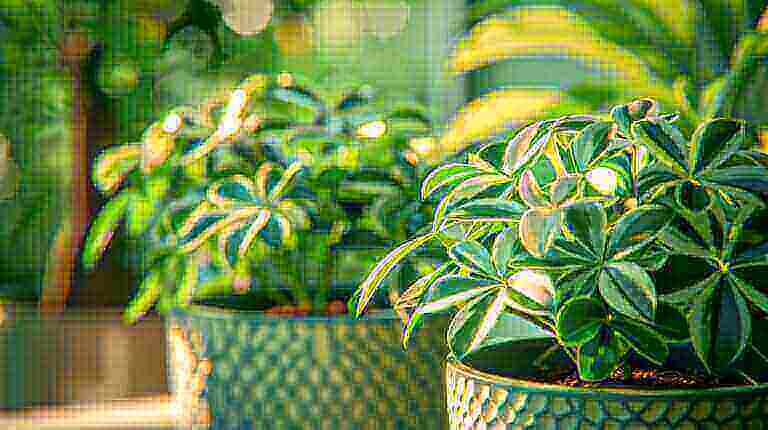Looking to expand your plant family and create a sense of belonging? Dive into the world of arrowhead plants with this step-by-step guide on propagating Syngonium Podophyllum.
Key Takeaways
- Choose healthy and well-established section of the stem cuttings with strong stems and visible nodes
- Use a well-draining soil mixture of peat moss, perlite, and sand
- Take care of the mother plant during propagation
- Transplant the rooted cutting into a slightly larger pot with drainage holes
Choosing the Right Cutting For Arrowhead Plant Propagation
To ensure successful propagation, you should frequently select healthy and well-established cuttings when propagating an Arrowhead Plant Syngonium Podophyllum.
There are different types of Arrowhead Plant varieties that can be propagated, including the Green Arrowhead, Pink Allusion, and the White Butterfly.
When selecting a cutting for propagation, there are several factors to consider. First, ensure that the cutting is at least 6 inches long and has multiple leaves. Look for cuttings that have a strong and healthy stem without any signs of damage or discoloration.
It’s also important to choose cuttings that have visible nodes, as these are where the new roots will develop. Additionally, select cuttings that have a good balance of mature and new growth, as this will increase the chances of successful propagation.
Preparing the Propagate Arrowhead Plant In Soil
After selecting the right cutting, it’s time to prepare the propagation medium for your Arrowhead Plant Syngonium Podophyllum. Choosing the right soil mixture is crucial for successful propagation. You should use a well-draining mixture that retains moisture without becoming waterlogged. A good option is a mixture of peat moss, perlite, and sand in equal parts. This blend allows for proper water drainage while retaining enough moisture for the cutting to develop roots.
Fill a clean pot with this soil mixture, leaving about an inch of space at the top. Now, it’s time to water and care for the cutting. Gently water the soil until it’s evenly moist, being careful not to over-water. Place the cutting into the prepared soil, ensuring that at least one node is buried.
Taking the Syngonium Stem Cutting
Start by selecting a healthy stem from your Arrowhead Plant Syngonium Podophyllum. Look for a stem that is about 4-6 inches long and has at least three leaves. Make sure the stem is free from any signs of disease or pests.
To take the cutting, use a clean pair of scissors or pruning shears and make a clean cut just below a node. A node is where a leaf is attached to the stem.
Proper care for the mother plant during propagation is essential. Make sure the mother plant is well-hydrated and receiving enough light. Avoid overwatering and keep an eye out for any signs of stress or disease.
When taking cuttings, there are some common mistakes to avoid. Firstly, do not take cuttings from a weak or unhealthy plant. Secondly, do not take cuttings that are too short or too long. And finally, avoid taking too many cuttings from the same plant, as it can weaken the mother plant.
Taking the cutting is an important step in propagating your Arrowhead Plant. By following these steps and avoiding common mistakes, you will increase your chances of success and enjoy the satisfaction of growing new plants.
| Common Mistakes to Avoid | Proper Care for the Mother Plant during Propagation |
|---|---|
| Taking cuttings from a weak or unhealthy plant | Keep the mother plant well-hydrated |
| Taking cuttings that are too short or too long | Ensure the mother plant receives enough light |
| Taking too many cuttings from the same plant | Avoid overwatering the mother plant |
Rooting Arrowhead Houseplant Using Stem Cuttings
Once you have taken the cutting, it’s important to root it in order to successfully propagate your Arrowhead Plant Syngonium Podophyllum. Rooting the cutting is a crucial step in the propagation process, and there are some common mistakes to avoid to improve your success rate.
One common mistake is using a container that’s too large, as this can lead to the cutting being overwatered and rotting. It’s also important to provide the right amount of moisture to the cutting by misting it regularly and keeping the soil slightly damp.
In addition, providing the cutting with indirect light and maintaining a warm temperature will aid in successful rooting. By following these tips and avoiding common mistakes, you can increase your chances of successfully rooting your Arrowhead Plant Syngonium Podophyllum cutting.
Transplanting the Rooted Cutting
To transplant the rooted cutting of your Arrowhead Plant Syngonium Podophyllum, you’ll need a small pot and fresh potting soil.
Follow these steps to successfully transfer your plant to a larger pot:
- Choose a pot that’s slightly larger than the current one to allow for growth. Ensure it has drainage holes to prevent waterlogged roots.
- Fill the new pot with fresh potting soil, leaving enough space at the top for the plant.
- Carefully remove the rooted cutting from its current pot, gently loosening the roots if necessary.
- Place the plant in the center of the new pot, ensuring the root ball is level with the soil surface. Add more soil around the roots, gently firming it in place.
Troubleshooting common transplanting issues:
- If the plant wilts after transplanting, water it thoroughly and keep it in a shaded area until it recovers.
- If the leaves turn yellow, it may be a sign of overwatering. Adjust your watering routine accordingly.
- If the plant becomes root-bound, with roots circling the pot, it’s time to repot into an even larger container.
Frequently Asked Questions
How Long Does It Take for the Arrowhead Plant Cutting to Root?
When it comes to rooting arrowhead plant cuttings, the time it takes can vary depending on a few factors. Factors such as the temperature, humidity, and the method of propagation can all affect the rooting time.
Some methods, like using water or soil, may yield quicker results than others. It’s important to consider these factors and choose the method that suits you best.
With proper care and patience, your arrowhead plant cuttings should root in a matter of weeks.
Can I Propagate an Arrowhead Plant in Water Instead of Soil?
You can definitely propagate an arrowhead plant in water instead of soil. This method has its benefits, such as using rooting hormone to encourage faster root growth.
To do this, start by taking a healthy cutting from the parent plant. Remove the lower leaves and dip the cut end in rooting hormone.
Plant the cutting in water using a container filled with water, making sure the cut end is submerged. Change the water every few days to prevent stagnation and promote healthy root development.
What Should I Do if My Arrowhead Plant Cutting Is Not Rooting?
If your arrowhead plant cutting isn’t rooting, don’t panic! Troubleshooting common issues is key.
First, ensure your cutting has enough moisture and is placed in a warm, humid environment.
If it’s still not rooting, try using a rooting hormone to stimulate growth.
Additionally, consider alternative methods for propagating arrowhead plants. You can also plant your cuttings using sphagnum peat moss or a soilless mix that can retain moisture.
How Often Should I Water the Arrowhead Plant Cutting During the Rooting Process?
During the rooting process of your arrowhead plant cutting soil propagation, it’s important to water it regularly. Aim to keep the soil consistently moist, but not overly saturated. Check the moisture level by sticking your finger about an inch into the soil – if it feels dry, it’s time to water.
Be mindful not to overwater, as this can lead to root rot. Choose a well-draining soil mix to ensure proper moisture balance and avoid waterlogged conditions.
Temperature can also affect the rooting process, so keep your cutting in a warm environment, ideally around 70-75 degrees Fahrenheit.
Is It Necessary to Use Rooting Hormone When Propagating an Arrowhead Plant?
Using rooting hormone isn’t necessary when propagating an arrowhead plant, but it can increase the chances of success. There are alternatives to rooting hormone that you can try, such as using cinnamon powder or aloe vera gel.
To successfully propagate an arrowhead plant, make sure to use a sharp, sterile knife to take a cutting, place it in water or moist soil, and provide it with indirect light and consistent moisture.







